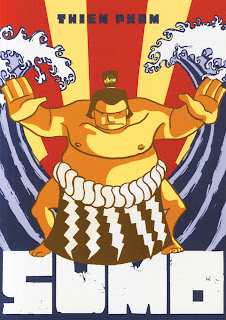Reviews by Richard Pachter
A Wrinkle in Time: The Graphic Novel. Madeleine L'Engle, Hope Larson. Farrar, Straus and Giroux. 392 pages.
Unsurprisingly, the beloved fantasy story also makes a fantastic all-ages graphic novel. Larson’s whimsical and expressive narrative illustrations are ideal for illuminating this quirky coming of age tale for smart kids. It’s a fine adaptation and longtime lovers of the original text as well as newbies will delight at the doings of Meg Murry, her family, friends and the mysterious trio of Mrs. Whatsit, Mrs. Who and Mrs. Which.
Though a bit of the futuristic urban slang that comprises some of the dialog can be a little challenging at times, Azzarello’s crazy-good story of abandoned and ostracized future mutants bred for space travel, along with a dying earth, reality TV, and the value of friendship and the definition of humanity is audacious and riveting. Eduardo Risso’s blazing art depicts this dystopic adventure with dazzling authority and sensitivity. Great science fiction is always rooted in human emotions and Spaceman soars with passion.
Stavans’ self-starring story about a murder mystery, Spanish Catholic-to-New Mexican-Jewish conversos, art, human nature, martyrdom and more is absorbing, fresh and full of potential. But the unfinished quality of Sheinkin’s art undercuts the venture and undermines the storytelling flow. It might be a matter of style rather than of competence, but the result is unsatisfying and frustrating, especially given the rich tapestry Stavans attempts to unfurl.
Van Sciver’s well-researched delineation of pre-presidential (1837-1842) Abraham Lincoln’s dark period of depression is a wonder. The authentically depicted contemporaneous “cures” administered for this mental illness included bloodletting and mercury treatments, which are presented unflinchingly. Though perhaps an odd choice for a graphic novel, Van Sciver’s realization of this revealing chapter of American history makes more than perfect sense.
This prodigious and astounding collection of literary adaptations is staggering in its ambition, but even more so in its execution and realization. Kick’s anthology, the middle volume of a chronological trilogy, includes graphic iterations of works by Coleridge, Keats, Twain, Blake, Wordsworth and others, by Megan Kelso, S. Clay Wilson, Dame Darcy, Hunt Emerson, Lance Tooks and Kim Deitch, among the superb array of contributors.
The Girl With The Dragon Tattoo Book 1. Denise Mina, Andrea Mutti, Leonardo Manco. DC/Vertigo. 152 pages.
Not the only graphic adaptation of the first third of Larsen’s Millennium trilogy (there are French and Japanese versions from other publishers), but this one, covering the first half of the novel by the international team of Mina, Manco and Mutti, effects a very readable version of the story. Violent and powerful, it’s also studded with quiet, meditative moments between the mayhem and mystery. Its rhythm and contents are closer to the original work than the fine David Fincher movie adaptation, too.
The Cape. Joe Hill, Jason Ciaramella, Zach Howard. IDW. 132 pages.
No relation to the short-lived TV series, Ciaramella’s very able adaptation of Hill’s short story plays a nice twist on the superhero myth. Howard’s moody art is the ideal medium for the gloomy anti-heroics and twisted fraternal villainy.
Sumo. Thien Pham. First Second. 112 pages.
Author Pham doesn’t crowd his simple but lyrical narrative with redundant text and images, but builds the potentially trite tale of a struggling American collegiate athlete who tries to find himself by seeking a career as a Sumo wrestler in Japan into much more than a fish-out- of-water story. The simple art is powerful, evocative and effective. Highly recommended.
Abelard. Renaud Dillies, Regis Hautiere. NBM. 128 pages.
This engaging parable (translated from the French) tells the saga of a wistful, yearning sparrow whose chapeau produces apt daily aphorisms. Smitten by a fetching female creature, he leaves the comfort of his European marsh home, journeying to America to seek his fate. It’s a grown-up story of lust and life, with violence and tragedy, despite the animal cast. Dillies’ art is detailed and masterful, and even those (like me) who normally disdain animal stories will admire this wistful fable.
Monster Myths. John Lupo Avanti. ComX. 120 Pages.
It’s rarely a good sign when a story is prefaced by a glossary; too much work, not enough clarity. Fortunately, Monster Myths mostly manages to convey its tale without requiring references. Avanti is an earnest artist and storyteller, and shows great promise beyond this turgid tale of good, evil and gentrification.
Richard Stark’s Parker Book Three: The Score. Darwyn Cooke. IDW. 144 pages.
The latest adaptation of Donald Westlake’s tough pulp series, this one about a criminal attack on a town that goes inevitably awry, is beautifully rendered. Lean, taut and perfectly plotted, Cooke’s brilliant rendition doesn’t miss a beat, nor hit a single false note.













No comments:
Post a Comment